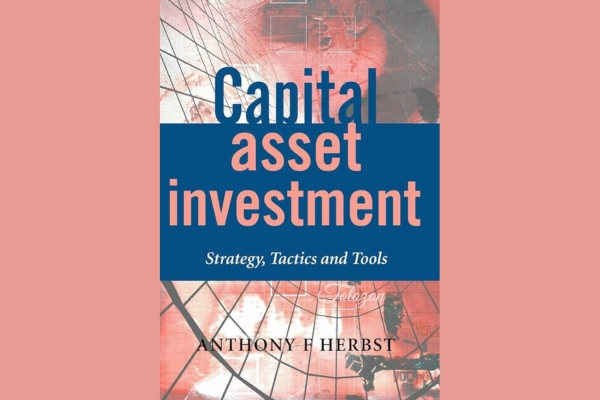-
×
 White Phoenix’s The Smart (Money) Approach to Trading with Jayson Casper
1 × $39.00
White Phoenix’s The Smart (Money) Approach to Trading with Jayson Casper
1 × $39.00 -
×
 Home Run Options Trading Course with Dave Aquino - Base Camp Trading
1 × $11.00
Home Run Options Trading Course with Dave Aquino - Base Camp Trading
1 × $11.00 -
×
 Crystal Ball Pack PLUS bonus Live Trade By Pat Mitchell - Trick Trades
1 × $20.00
Crystal Ball Pack PLUS bonus Live Trade By Pat Mitchell - Trick Trades
1 × $20.00 -
×
 How To Read The Market Professionally with TradeSmart
1 × $27.00
How To Read The Market Professionally with TradeSmart
1 × $27.00 -
×
 ICT Prodigy Trading Course – $650K in Payouts with Alex Solignani
1 × $15.00
ICT Prodigy Trading Course – $650K in Payouts with Alex Solignani
1 × $15.00 -
×
 Forecast 2024 Clarification with Larry Williams
1 × $15.00
Forecast 2024 Clarification with Larry Williams
1 × $15.00 -
×
 Trading Short TermSame Day Trades Sep 2023 with Dan Sheridan & Mark Fenton - Sheridan Options Mentoring
1 × $31.00
Trading Short TermSame Day Trades Sep 2023 with Dan Sheridan & Mark Fenton - Sheridan Options Mentoring
1 × $31.00 -
×
 The Prop Trading Code with Brannigan Barrett - Axia Futures
1 × $23.00
The Prop Trading Code with Brannigan Barrett - Axia Futures
1 × $23.00 -
×
 $20 – 52k 20 pips a day challange with Rafał Zuchowicz - TopMasterTrader
1 × $5.00
$20 – 52k 20 pips a day challange with Rafał Zuchowicz - TopMasterTrader
1 × $5.00 -
×
 The Orderflows Trade Opportunities Encyclopedia with Michael Valtos
1 × $8.00
The Orderflows Trade Opportunities Encyclopedia with Michael Valtos
1 × $8.00 -
×
 The Naked Eye: Raw Data Analytics with Edgar Torres - Raw Data Analytics
1 × $8.00
The Naked Eye: Raw Data Analytics with Edgar Torres - Raw Data Analytics
1 × $8.00 -
×
 The Complete Guide to Multiple Time Frame Analysis & Reading Price Action with Aiman Almansoori
1 × $13.00
The Complete Guide to Multiple Time Frame Analysis & Reading Price Action with Aiman Almansoori
1 × $13.00 -
×
 Bond Market Course with The Macro Compass
1 × $15.00
Bond Market Course with The Macro Compass
1 × $15.00 -
×
 Best of the Best: Collars with Amy Meissner & Scott Ruble
1 × $15.00
Best of the Best: Collars with Amy Meissner & Scott Ruble
1 × $15.00 -
×
 Order flow self-study training program with iMFtracker
1 × $10.00
Order flow self-study training program with iMFtracker
1 × $10.00 -
×
 Essentials in Quantitative Trading QT01 By HangukQuant's
1 × $23.00
Essentials in Quantitative Trading QT01 By HangukQuant's
1 × $23.00 -
×
 Compass Trading System with Right Line Trading
1 × $39.00
Compass Trading System with Right Line Trading
1 × $39.00 -
×
 Quantamentals - The Next Great Forefront Of Trading and Investing with Trading Markets
1 × $8.00
Quantamentals - The Next Great Forefront Of Trading and Investing with Trading Markets
1 × $8.00 -
×
 Butterfly and Condor Workshop with Aeromir
1 × $15.00
Butterfly and Condor Workshop with Aeromir
1 × $15.00 -
×
 SQX Mentorship with Tip Toe Hippo
1 × $23.00
SQX Mentorship with Tip Toe Hippo
1 × $23.00 -
×
 WondaFX Signature Strategy with WondaFX
1 × $5.00
WondaFX Signature Strategy with WondaFX
1 × $5.00
Capital Asset Investment with Anthony F.Herbst
$6.00
File Size: Coming soon!
Delivery Time: 1–12 hours
Media Type: Online Course
Content Proof: Watch Here!
You may check content proof of “Capital Asset Investment with Anthony F.Herbst” below:

Capital Asset Investment with Anthony F. Herbst
Investing in capital assets can be a game-changer for businesses and individual investors alike. Anthony F. Herbst, a renowned expert in the field, provides valuable insights into making sound capital asset investments. This article explores the principles, strategies, and benefits of capital asset investment, drawing on Herbst’s expertise to guide you through the process.
Understanding Capital Asset Investment
What Are Capital Assets?
Capital assets are significant pieces of property such as buildings, machinery, and equipment that a business uses to generate revenue. These assets are typically long-term and require substantial investment.
Types of Capital Assets
- Tangible Assets: Physical items like real estate, machinery, and vehicles.
- Intangible Assets: Non-physical items like patents, trademarks, and goodwill.
Why Invest in Capital Assets?
Investing in capital assets can lead to increased production capacity, improved efficiency, and enhanced competitive advantage. They are essential for growth and long-term sustainability.
Anthony F. Herbst’s Approach to Capital Asset Investment
Who is Anthony F. Herbst?
Anthony F. Herbst is a distinguished author and financial expert specializing in capital asset investments. His methodologies emphasize thorough analysis and strategic planning.
Key Principles of Herbst’s Investment Strategy
- Detailed Analysis: Conduct comprehensive evaluations of potential investments.
- Long-Term Perspective: Focus on investments that offer sustainable growth.
- Risk Management: Implement strategies to mitigate potential risks.
Implementing Capital Asset Investment
Step-by-Step Guide
- Identify Investment Opportunities: Look for assets that align with your business goals.
- Conduct Feasibility Studies: Assess the viability and potential return on investment (ROI).
- Secure Financing: Explore financing options such as loans, leases, or equity funding.
- Purchase and Implement: Acquire the asset and integrate it into your operations.
- Monitor and Maintain: Regularly evaluate the asset’s performance and maintain it to ensure longevity.
Tools for Effective Investment
- Financial Models: Use models like Net Present Value (NPV) and Internal Rate of Return (IRR) to assess investment potential.
- Software Tools: Employ software for asset management and financial planning.
- Professional Advice: Consult with financial advisors and investment experts.
Benefits of Capital Asset Investment
Increased Efficiency
Investing in modern equipment and technology can significantly improve operational efficiency, reducing costs and increasing output.
Enhanced Production Capacity
Capital assets enable businesses to expand their production capacity, meeting higher demand and scaling operations.
Competitive Advantage
Owning advanced capital assets can give businesses a competitive edge, allowing them to innovate and outperform competitors.
Challenges of Capital Asset Investment
High Initial Costs
Capital assets often require substantial upfront investment, which can strain financial resources.
Maintenance and Depreciation
Ongoing maintenance and depreciation can impact the long-term value and profitability of capital assets.
Market Volatility
Economic fluctuations can affect the value and utility of capital assets, making investment outcomes uncertain.
Anthony F. Herbst’s Tips for Successful Investment
Conduct Thorough Research
Always perform detailed research before making any investment decision. Understanding market trends and potential risks is crucial.
Diversify Investments
Diversify your investment portfolio to spread risk across different asset types and industries.
Plan for the Long Term
Focus on long-term gains rather than short-term profits. Capital assets are typically held for extended periods, so plan accordingly.
Case Studies: Successful Capital Asset Investments
Example 1: Tech Company Expansion
A tech company invested in state-of-the-art manufacturing equipment, which led to a 30% increase in production capacity and significant cost savings.
Example 2: Real Estate Acquisition
A real estate firm purchased commercial properties in emerging markets, resulting in substantial rental income and property value appreciation.
Example 3: Renewable Energy Projects
An energy company invested in wind turbines and solar panels, reducing operational costs and enhancing sustainability.
Conclusion
Investing in capital assets, as guided by Anthony F. Herbst, can be highly rewarding. By conducting thorough research, planning for the long term, and managing risks effectively, investors can achieve substantial growth and competitive advantage. While challenges exist, the benefits of well-executed capital asset investments far outweigh the potential drawbacks.
Frequently Asked Questions:
1. What are capital assets?
Capital assets are significant long-term assets such as buildings, machinery, and equipment used to generate revenue.
2. Why is investing in capital assets important?
Investing in capital assets increases production capacity, improves efficiency, and provides a competitive advantage.
3. What are the key principles of Anthony F. Herbst’s investment strategy?
Herbst emphasizes detailed analysis, a long-term perspective, and effective risk management in capital asset investments.
4. What challenges can arise in capital asset investment?
Challenges include high initial costs, maintenance and depreciation, and market volatility.
5. How can I ensure successful capital asset investments?
Success can be achieved through thorough research, diversification, and a focus on long-term planning.
Be the first to review “Capital Asset Investment with Anthony F.Herbst” Cancel reply
You must be logged in to post a review.
Related products
Forex Trading
Forex Trading
Forex Trading
Forex Trading
Forex Trading
Forex Trading
Forex Trading
Forex Trading
Forex Trading
Forex Trading
Quantamentals – The Next Great Forefront Of Trading and Investing with Trading Markets
Forex Trading














Reviews
There are no reviews yet.